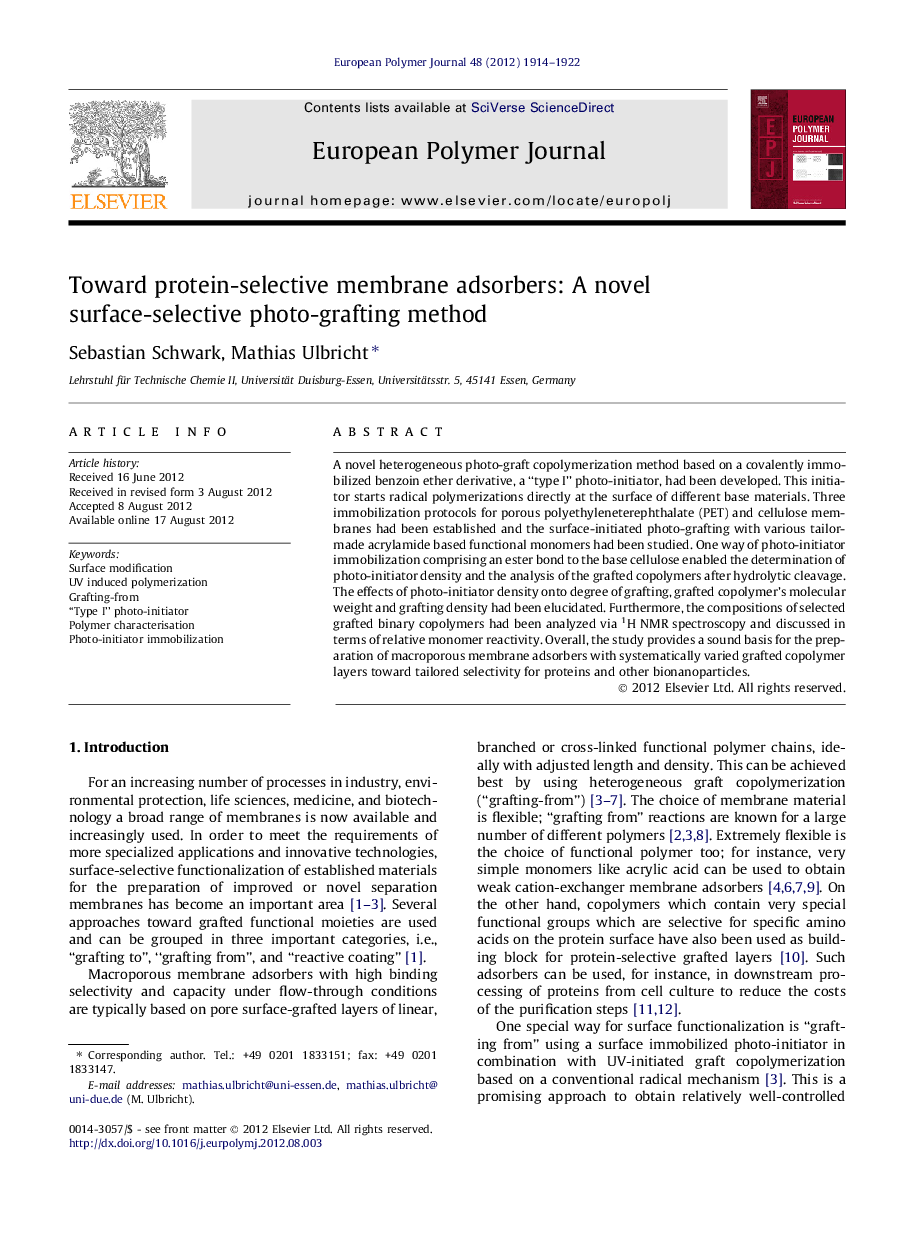| Article ID | Journal | Published Year | Pages | File Type |
|---|---|---|---|---|
| 1400469 | European Polymer Journal | 2012 | 9 Pages |
A novel heterogeneous photo-graft copolymerization method based on a covalently immobilized benzoin ether derivative, a “type I” photo-initiator, had been developed. This initiator starts radical polymerizations directly at the surface of different base materials. Three immobilization protocols for porous polyethyleneterephthalate (PET) and cellulose membranes had been established and the surface-initiated photo-grafting with various tailor-made acrylamide based functional monomers had been studied. One way of photo-initiator immobilization comprising an ester bond to the base cellulose enabled the determination of photo-initiator density and the analysis of the grafted copolymers after hydrolytic cleavage. The effects of photo-initiator density onto degree of grafting, grafted copolymer’s molecular weight and grafting density had been elucidated. Furthermore, the compositions of selected grafted binary copolymers had been analyzed via 1H NMR spectroscopy and discussed in terms of relative monomer reactivity. Overall, the study provides a sound basis for the preparation of macroporous membrane adsorbers with systematically varied grafted copolymer layers toward tailored selectivity for proteins and other bionanoparticles.
Graphical abstractIntroduction of surface-immobilized “type I” photo-initiator groups on the membrane surface.Figure optionsDownload full-size imageDownload as PowerPoint slideHighlights► A novel surface-immobilized photo-initiator for grafting functional polymer layers has been established. ► Surface grafting on membrane pores can be controlled with respect to grafting density. ► Grafted copolymer molecular weight and composition had been analyzed after cleavage from the membrane.
